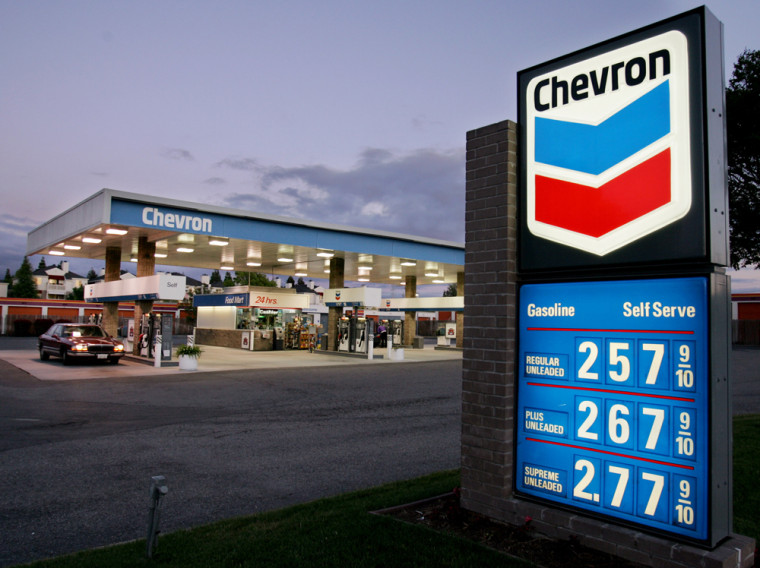U.S. retail gasoline prices won’t reach the peak of $2.35 a gallon in May as previously forecast and should continue declining through this month, the government said Wednesday.
A strong rise in crude oil inventories to the highest level in almost six years has pushed down the price for oil and, as a result, lowered gasoline costs, according to the Energy Information Administration.
The Energy Department’s analytical arm had previously forecast that gasoline would peak at $2.35 a gallon in May. Fuel prices normally rise through the Memorial Day holiday -- the traditional start of the U.S. summer driving vacation season -- at the end of the month.
Since hitting a record high of $2.28 a gallon three weeks ago, the national average pump price has fallen about 4 cents.
“Unless supplies are disrupted, either through reduced crude oil availability or from a major refinery or pipeline outage, retail gasoline prices are likely to fall during May as lower wholesale gasoline prices are reflected at the retail level,” the EIA said in its weekly review of the oil market.
“The U.S. gasoline market is showing marked signs of improvement for consumers,” the agency said.
The EIA said gasoline prices will still remain “well above” last summer’s level and the higher pump costs have put gasoline demand growth on ”a somewhat slower pace.”
The agency will release its revised monthly energy forecast May 10.
U.S. gasoline use has averaged 9.147 million barrels per day (bpd) over the last four weeks, up just 0.9 percent from the same period a year ago, according to EIA data.
John Felmy, chief economist for the American Petroleum Institute, also told reporters on Wednesday that high pump prices have caused “some decline” in gasoline demand.
He pointed out that sales of gas-guzzling sport utility vehicles (SUVs) have fallen significantly as consumers act to use less expensive gasoline.
U.S. crude oil inventories rose to 327 million barrels at the end of the last week, the biggest weekly stock level since July 1999.
However, the EIA said crude oil stocks will have to be drawn down later this summer.
The agency said with the amount of oil processed by refineries expected to increase by at least 800,000 bpd between now and the peak this summer, and imports not likely to rise much from current levels, inventories will have to be tapped to supply the crude that refineries will need.
“Therefore, the longer and higher U.S. crude oil inventories can build before they’re needed, the greater the quantity that will be available when refinery inputs peak,” the EIA said.
